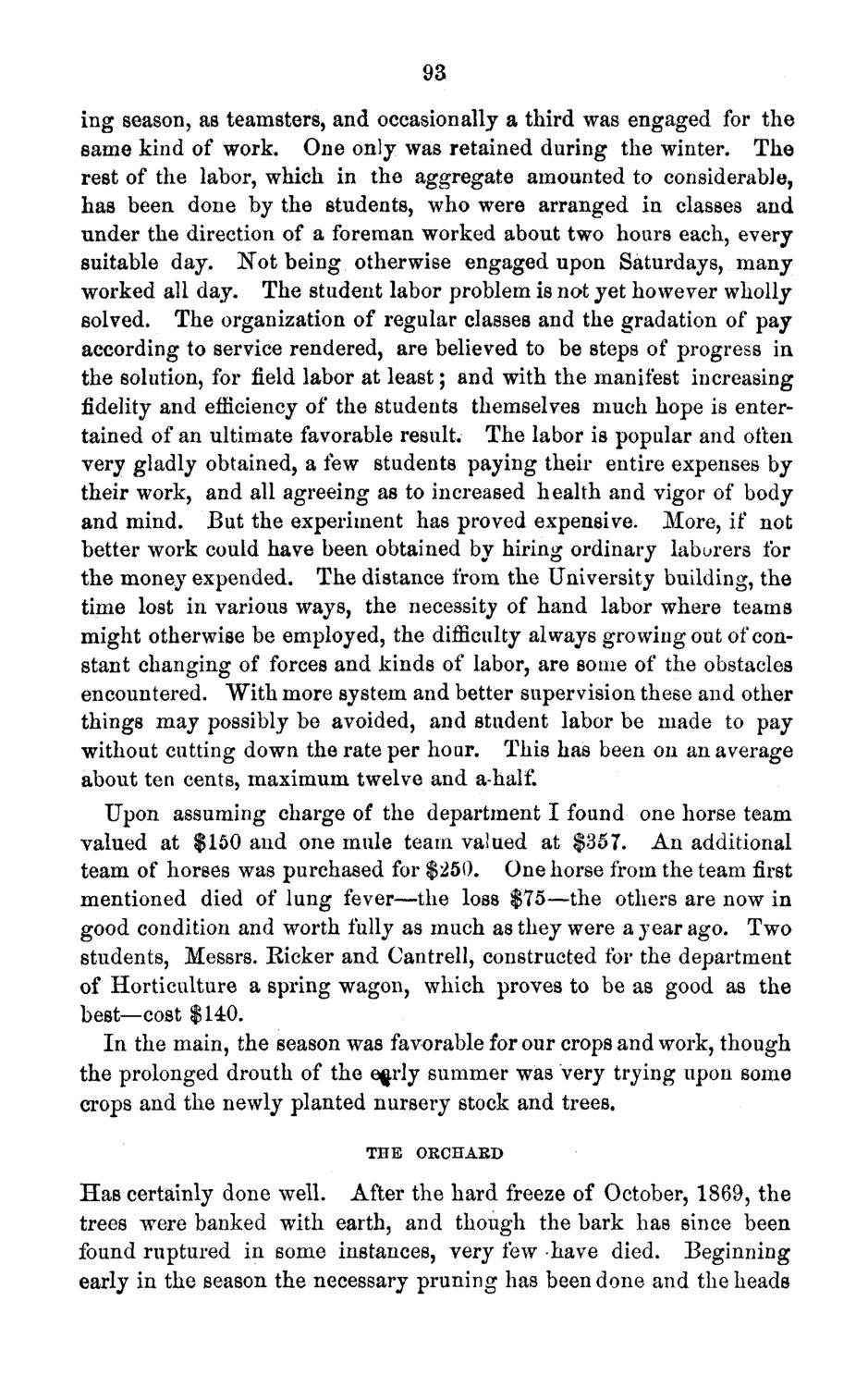| |
| |
Caption: Board of Trustees Minutes - 1871
This is a reduced-resolution page image for fast online browsing.

EXTRACTED TEXT FROM PAGE:
93 ing season, as teamsters, and occasionally a third was engaged for the same kind of work. One only was retained during the winter. The rest of the labor, which in the aggregate amounted to considerable, has been done by the students, who were arranged in classes and under the direction of a foreman worked about two hours each, every suitable day. Not being otherwise engaged upon Saturdays, many worked all day. The student labor problem is not yet however wholly solved. The organization of regular classes and the gradation of pay according to service rendered, are believed to be steps of progress in the solution, for field labor at least; and with the manifest increasing fidelity and efficiency of the students themselves much hope is entertained of an ultimate favorable result. The labor is popular and often very gladly obtained, a few students paying their entire expenses by their work, and all agreeing as to increased health and vigor of body and mind. But the experiment has proved expensive. More, if not better work could have been obtained by hiring ordinary laborers for the money expended. The distance from the University building, the time lost in various ways, the necessity of hand labor where teams might otherwise be employed, the difficulty always growing out of constant changing of forces and kinds of labor, are some of the obstacles encountered. "With more system and better supervision these and other things may possibly be avoided, and student labor be made to pay without cutting down the rate per hour. This has been on an average about ten cents, maximum twelve and a-half. Upon assuming charge of the department I found one horse team valued at $150 and one mule team valued at $357. An additional team of horses was purchased for $250. One horse from the team first mentioned died of lung fever—the loss $75—the others are now in good condition and worth fully as much as they were a year ago. Two students, Messrs. Eicker and Cantrell, constructed for the department of Horticulture a spring wagon, which proves to be as good as the best—cost $140. In the main, the season was favorable for our crops and work, though the prolonged drouth of the ejjrly summer was very trying upon some crops and the newly planted nursery stock and trees. THE ORCHARD Has certainly done well. After the hard freeze of October, 1869, the trees were banked with earth, and though the bark has since been found ruptured in some instances, very few -have died. Beginning early in the season the necessary pruning has been done and the heads
| |